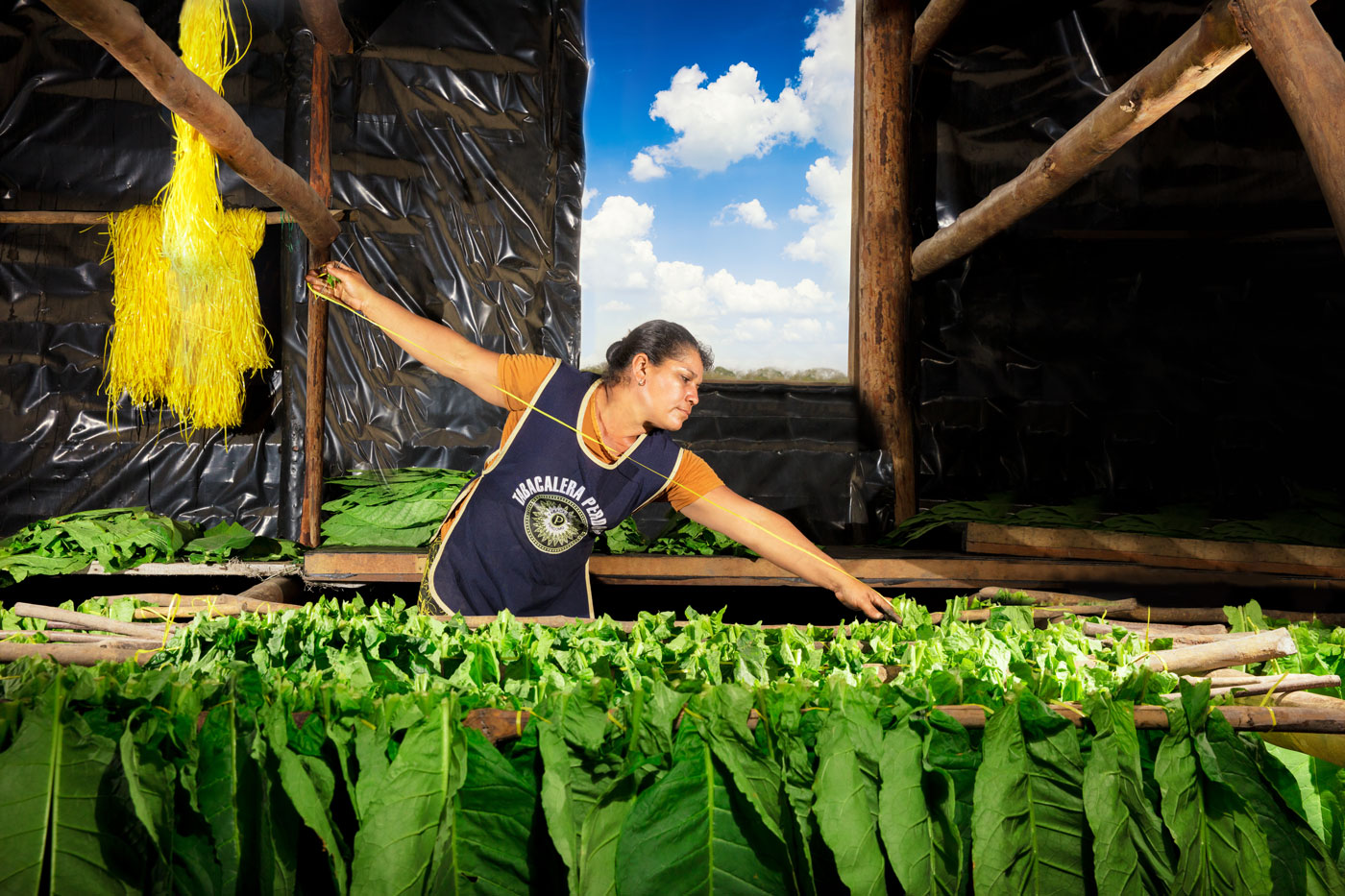Nicaraguan Shade Grown
Blended by fourth-generation cigar maker Nicholas Perdomo III, the Perdomo Legacy features an extraordinary Nicaraguan tobacco that has never been used before.
"Over a decade ago, my father established a shade-grown operation on our 600-acre farm in Estelí, Nicaragua. The mineral-rich volcanic soil created the perfect environment for cultivating a rich, flavorful tobacco from a hybridized Cuban-Cameroon seed developed in collaboration with our agronomy and genetics teams. I am beyond excited and proud to share this exceptional tobacco—the Perdomo Nicaraguan Shade-Grown—with our loyal retailers, devoted consumers, and the entire cigar world."
—Nicholas Perdomo, III.
A Rare Shade-Grown Hybrid:
The Perdomo Cuban-Cameroon Seed Tobacco
The standout feature of the Perdomo Legacy is its one-of-a-kind shade-grown hybrid tobacco, crafted by combining Cuban-seed and Cameroon-seed genetics.
This rare combination delivers a unique balance of strength, sweetness, and spice:
Cuban Seed: Renowned for its full-bodied flavor, excellent combustion, and complex aroma, it imparts depth and richness to each cigar.
Cameroon Seed: Famous for its toothy texture and natural sweetness with a subtle hint of spice, it adds smoothness and balance to the blend.
Control Pollination & Seed Pod Development
By carefully crossing Cuban Seed and Cameroon Seed tobaccos through hand-controlled pollination and precise seed pod development, we've cultivated a groundbreaking tobacco varietal: the Nicaraguan Shade Grown. This exceptional hybrid, which we proudly call our “Super Seed”, represents a perfect marriage of tradition and innovation. We believe it stands among the greatest contributions to the tobacco industry—bold, refined, and deeply rooted in craftsmanship.
—Nicholas Perdomo, III.
Controlled Pollination: This method begins by carefully emasculating the female flower to prevent self-pollination. We then manually transfer pollen from the male flower to the female flower using a fine brush. This precise, hands-on technique leads to the successful development of the new Cuban-Cameroon seed pod.
Seed Pod Development: Once pollinated, the flower begins forming seed capsules over the course of the next month, eventually yielding more than a thousand hybrid seeds. We allow these seeds to fully mature before carefully harvesting, drying, and labeling them as our exclusive Cuban-Cameroon seed hybrids.
Greenhouse Cultuvation
After germinating the Cuban-Cameroon hybrid seeds, we transfer the young plants to our greenhouse, where they are nurtured in a meticulously controlled environment. This protected space ensures optimal plant health by regulating temperature, humidity, and UV exposure, while shielding them from insects, airborne viruses, and mold—laying the foundation for strong, resilient crops before they reach the fields.
Nicaraguan Shade Grown
Once our healthy Cuban-Cameroon hybrid tobacco plants are in the ground, they require 100 to 120 days to reach full maturity. We cultivate them under carefully controlled shade, reducing UV exposure by 30–40% to produce more elastic leaves with the ideal texture for premium wrapper tobacco.
The leaves are harvested through a gradual priming process—picked from the bottom of the plant upward—over several weeks. The result is what has come to be famously recognized as our Nicaraguan Shade-Grown Tobacco.
Curing Tobacco
The curing process for our Nicaraguan shade-grown tobacco, designed to dry the leaves and dissipate chlorophyll, takes approximately 45 to 60 days.
We air-cure the leaves by carefully hanging them, with optimal spacing, on eucalyptus sticks. This method allows us to gradually extract moisture while preserving the distinctive color and elasticity that make this tobacco truly exceptional.
Optimizing the Fermentation Process
The fermentation of Nicaraguan Shade Grown tobacco typically spans 18 to 24 months, a period in which both time and precision play crucial roles. Pilones (piles) are carefully constructed and monitored, with rotation initiated once the internal temperature reaches 102°F. This threshold is critical—we maintain vigilant temperature control throughout to protect the integrity and quality of the leaves.
As fermentation progresses, the tobacco transforms beautifully: the leaves develop a luxuriously silky texture and take on deep, reddish-brown hues, hallmark characteristics of well-aged Nicaraguan tobacco.
Sorting & Selecting
Following the meticulous fermentation process of the Nicaraguan Shade Grown tobacco—during which Pilones (piles) are built and carefully rotated by hand upon reaching an internal temperature of 102°F—our leaves emerge beautifully transformed. This critical temperature control is key to preventing damage and ensuring the highest quality.
Once fermentation is complete, the tobacco is sorted and selected based on its refined characteristics: a silky texture and the unmistakable reddish-brown hue.
Bale Aging & Bourbon Barrel-Aging
After fermentation, our Nicaraguan Shade Grown tobaccos undergo bale aging for a minimum of 10 years within our meticulously climate-controlled Perdomo warehouses. This extended aging period allows the leaves to naturally develop deeper flavor complexity and enhanced richness.
Once fully bale-aged, the tobaccos are then bourbon barrel aged for at least 10 months in American white oak barrels that previously held fine bourbon. This unique stage imparts subtle, nuanced notes while intensifying the color, texture, aroma, and flavor of the leaves—delivering a final round of fermentation that defines the signature quality of our tobacco.
"Each Perdomo Legacy blend is a reflection of our family’s unwavering dedication to tradition, craftsmanship, and passion. With the Legacy line, we honor our heritage while embracing the future of cigar making—continuing to innovate and create the finest cigars for our loyal consumers and retail partners around the world. Thank you for your trust, your support, and for being part of the Perdomo Legacy."
— Nicholas Perdomo, III





















